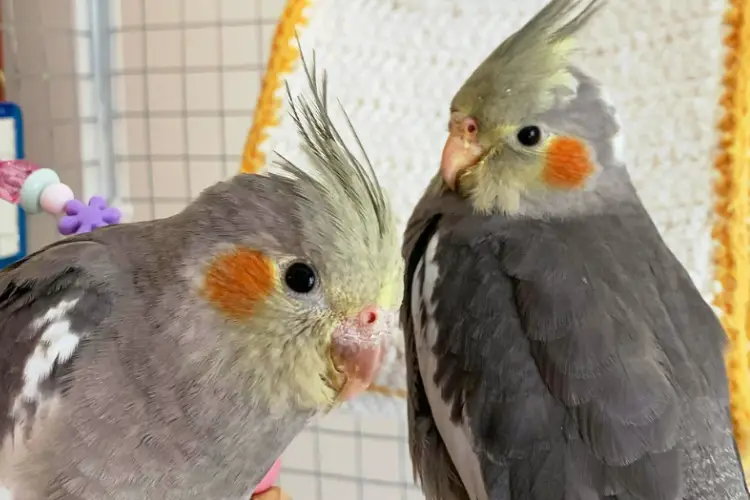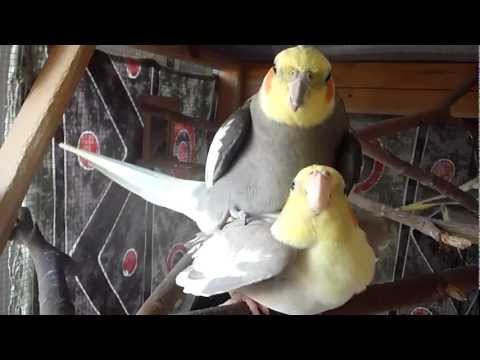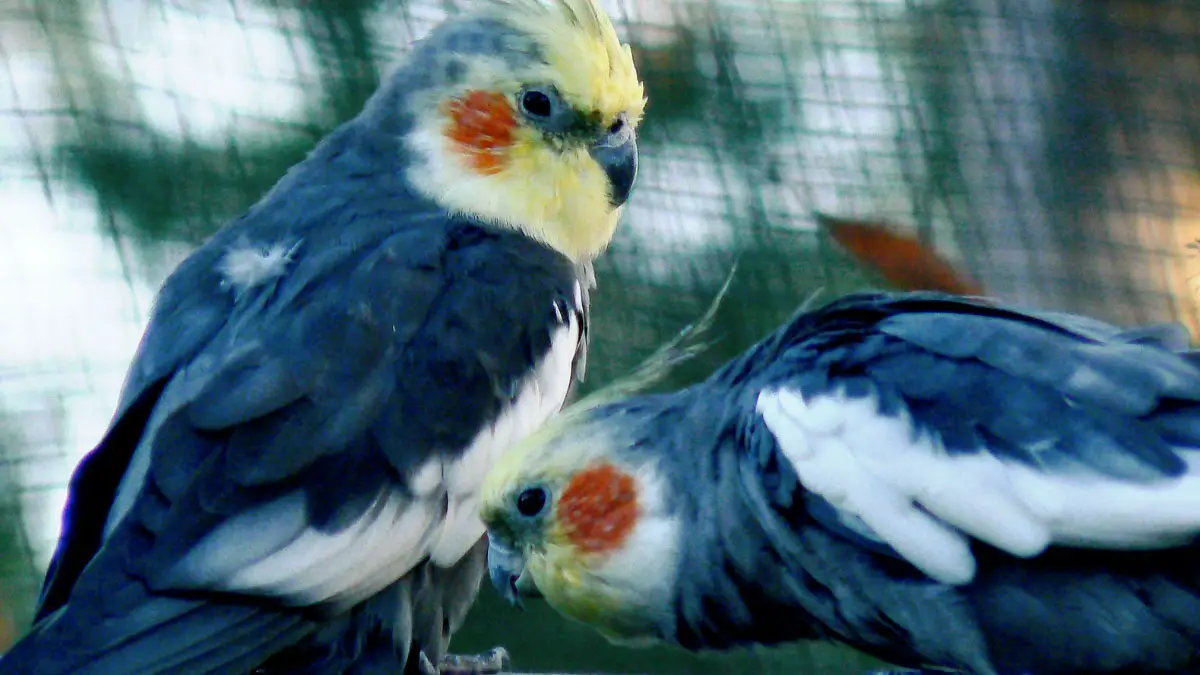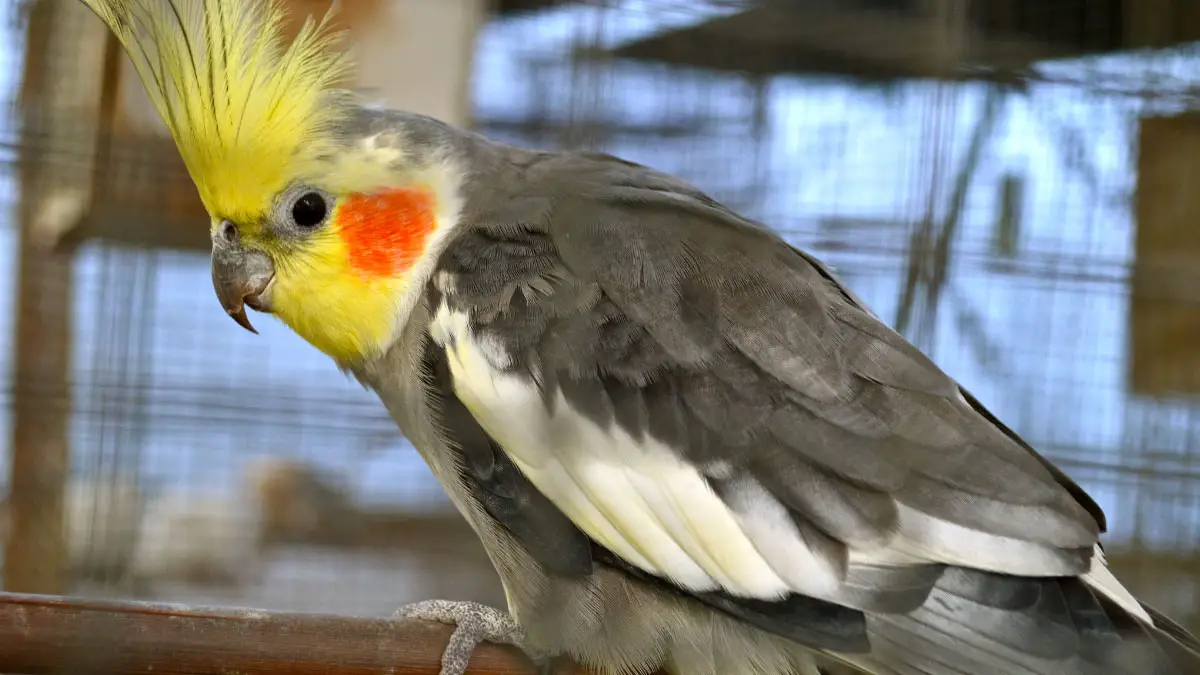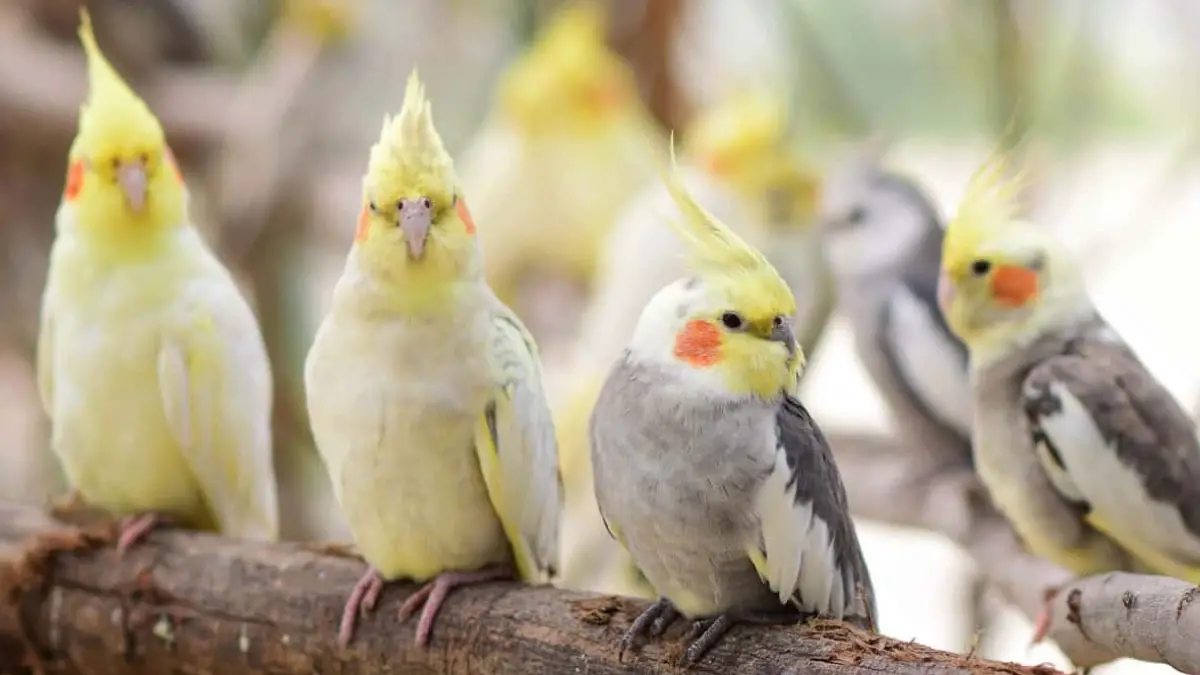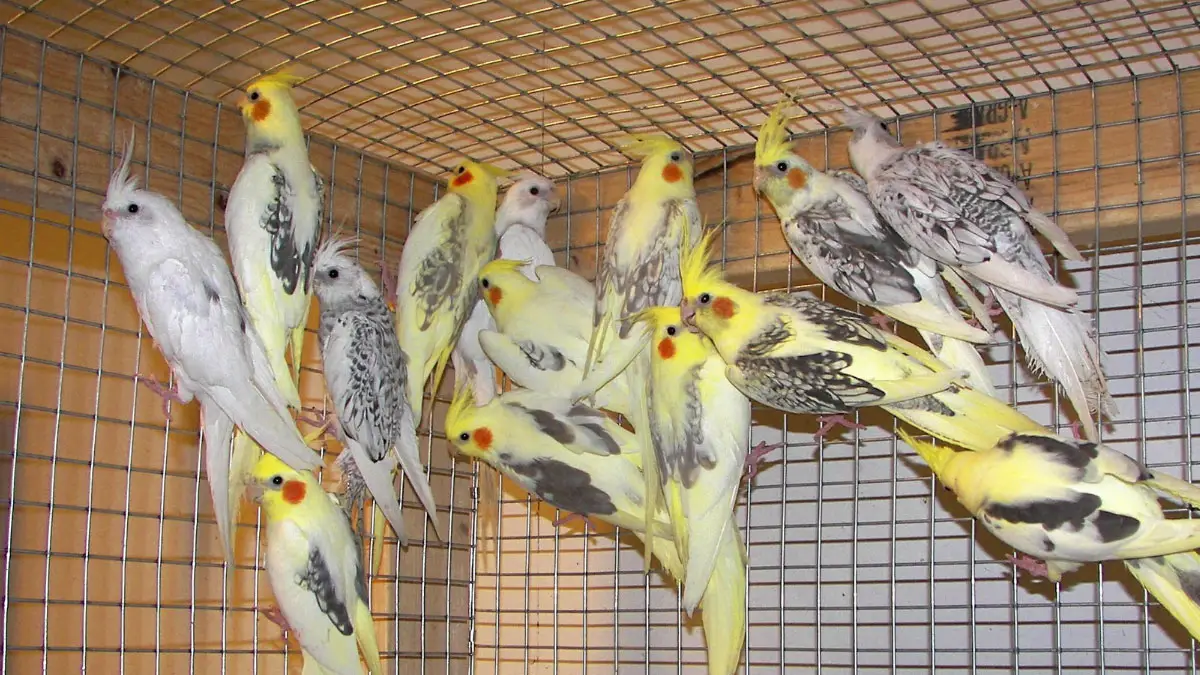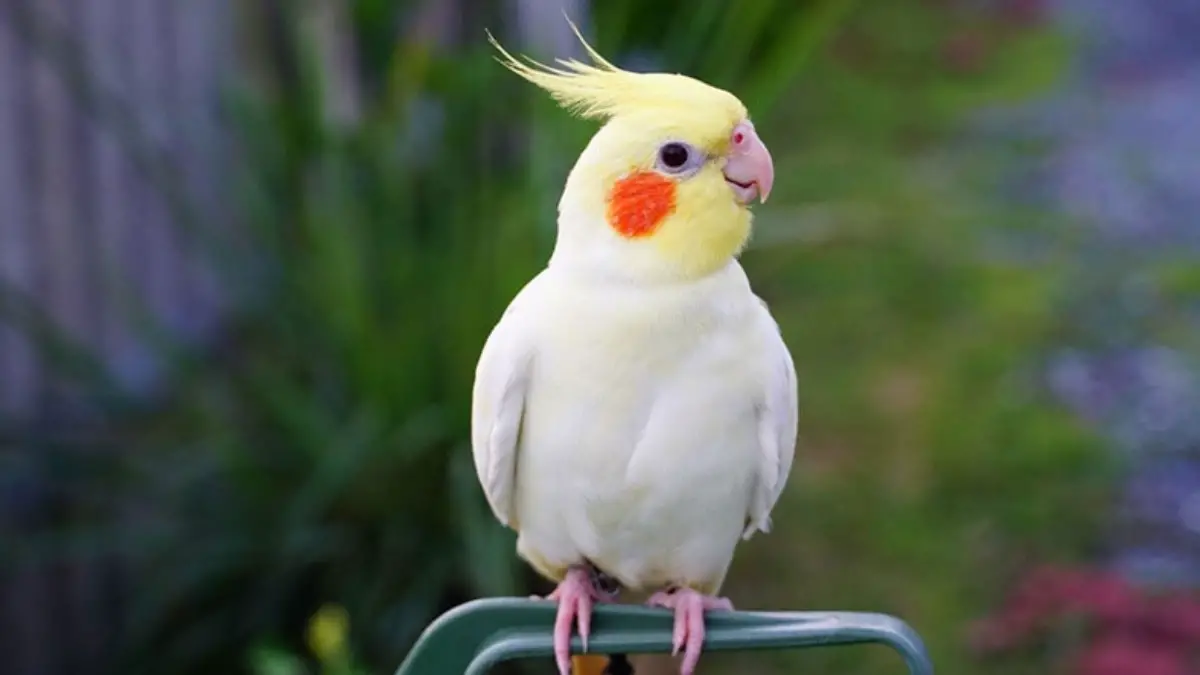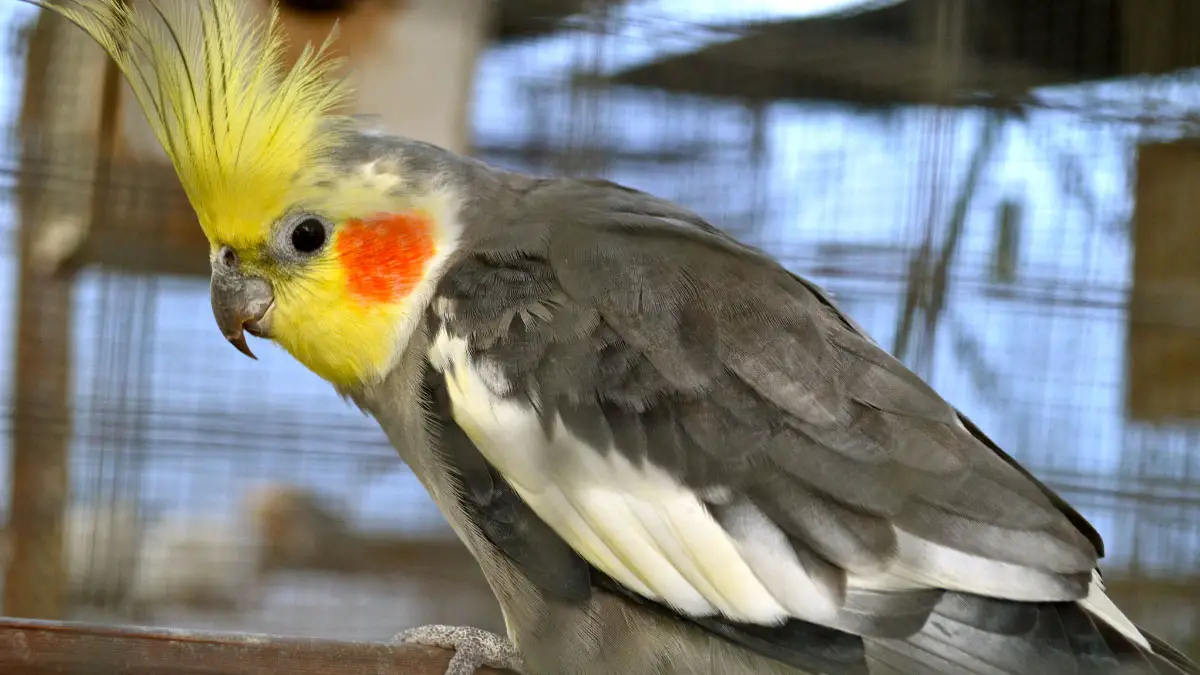When you own a cockatiel, you might wonder when it will begin its mating behavior. Cockatiels are very hard to read. Some behaviors they display when they are ready to mate are similar to their typical day-to-day behavior. Only a very keen owner can identify that the cockatiels are in their mating season.
How do I know if my cockatiel is mating? The behavior differs based on gender. However, some common behaviors for both cockatiels are grooming, regurgitating into each other’s mouths, and calling each other. The mating pair will also spend most of their time together singing or flying around. They do this to strengthen their bond.
Also, if you hear a continuous mating call, your cockatiels will breed soon or have already mated. For cockatiels to display mating behavior, they must be sexually mature. This article will explain everything about cockatiel mating behavior and questions you might have about the topic.
How Do I Know If My Cockatiel Is Mating?
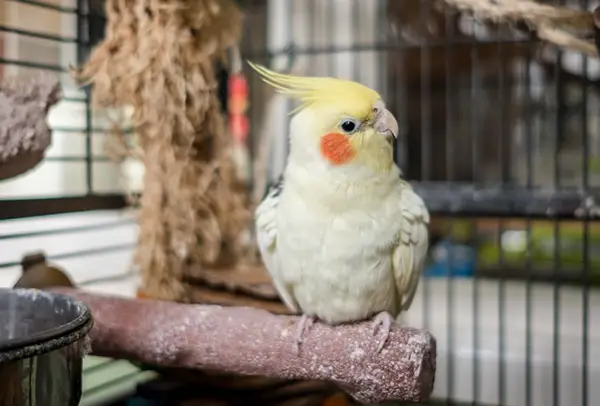
During the cockatiel mating season, you will observe the following signs;
Vocalization
During the breeding season, you can hear the female vocalizing. The male cockatiel will then respond with its call. The female cockatiel will select the male cockatiel that mimics her call the closest. Following this, you will notice that the pair will communicate, sit, and even eat together.
When mating, male cockatiels regurgitate food into the mouths of their partners. This indicates that the male can provide for his mate and their young. While laying eggs or caring for their young, females rarely leave their nests. To have enough strength to lay eggs, they require a dependable partner who will provide for them.
Nesting
Female cockatiels collect various materials to construct nests in which they will lay eggs. They will seek a secluded location and make it as cozy and comfortable as possible. If you have already given it a nesting box, you will notice that the female cockatiel will spend most of its time preparing it.
During this time, the male cockatiel will be highly territorial and bite anyone approaching its cage.
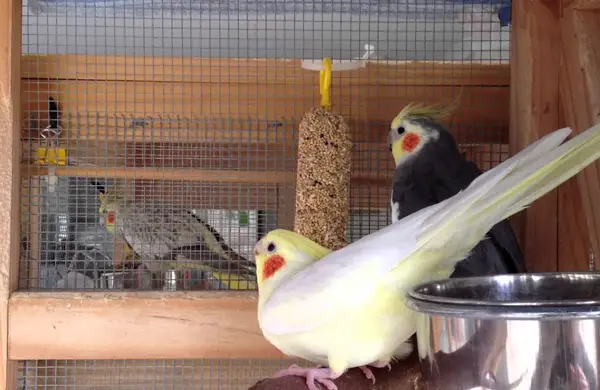
Sexual maturity
The male cockatiel is sexually mature at 18 months and females at 24 months. When the mating season commences, they will flirt and finally mate.
If you only have male cockatiels, they may mate once they reach their mating age. The same goes for females. However, the females will lay unfertilized eggs. If you observe such a situation, let the female lose interest in the eggs and throw them away.
Do Cockatiels Mate For Life?
Yes, cockatiels mate for life. In the wild, cockatiels find one mate and remain faithful despite the presence of numerous other potential mates. Cockatiels instinctively mate with a single partner and raise their young until they leave the nest.
In captivity, cockatiels cannot choose their mate; however, when a male and female cockatiel are kept together, they form a bond and become lifelong partners.
Cockatiels only evaluate their mating options when they are juveniles. When seeking a mate, young cockatiels will preen each other’s heads and necks. Grooming below the neck is reserved for the chosen mate. Once a cockatiel has selected a mate, it ceases to court other potential mates.
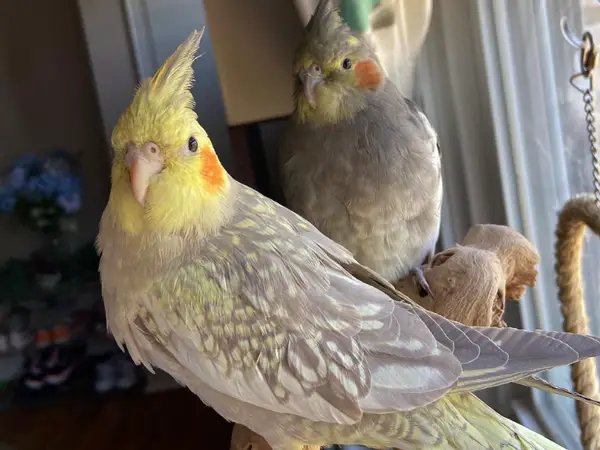
Conflict ensues when other cockatiels attempt to groom another bird’s mate. As a warning, the male cockatiel will attack another cockatiel or even its mate. Cockatiel owners are therefore advised only to pet their pets on the head.
Petting the cockatiel below the head will cause it to view you as its mate. Due to jealousy, it may also cause the bird’s mate to become very aggressive.
Nonetheless, many cockatiels will find a new companion if their mate dies during the courtship phase. In reality, they mate for a lengthy period, not for life.
Also read: Why Is My Cockatiel Losing Feathers?
What Do Male Cockatiels Do When They Want To Mate?
Male cockatiel hormonal behavior includes trying to mate with other objects or toys and regurgitating on their owners or mirrors. You can also observe them hovering around the nesting box. If no females are in the cage, the male cockatiel will try to mate with other males.
When male cockatiels want to mate, they begin with vocalization. It is called the mating call. The male cockatiel begins to whistle with varied sounds, such as twittering.
You cannot miss a mating call; the male cockatiel sings in a soft sweet sound. That way, he gets the attention of the female. Males have a lower tone than females when it comes to the pitch of the mating call.
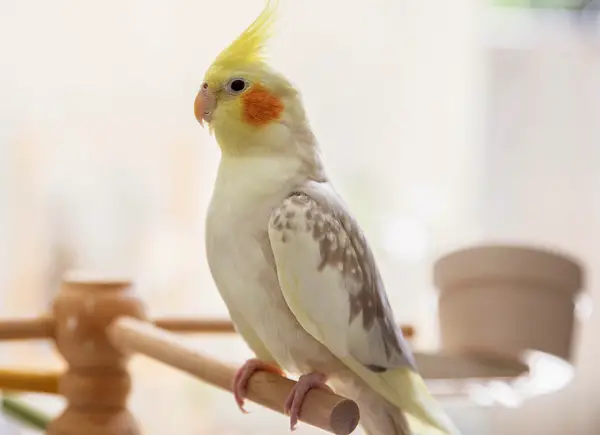
The other way male cockatiels display their want to mate is by performing the mating ritual. The male cockatiel will try to woo the female by doing a dance where he flaps his wings and imitates the female’s vocalizations. He will also fly up and down in the cage while persistently emitting a high-pitched call.
When making the call, they can also perch with their wings drawn away from the body. He faces the female with his crest lowered as he twists his head from side to side.
As the male cockatiel finalizes his dance, he taps the nesting box with his beak. That is his way of convincing the female cockatiel to enter the nesting box. However, if the female refuses to pay attention, the male may spend several days entering and exiting the nesting box.
Also, when the female cockatiel is on the ground, the male will follow her around while making mating calls. Once the female cockatiel gives in to his calls, the male cockatiel will begin constructing a larger entrance on the nesting box. That way, the female can enter with ease.
Female Cockatiel In Heat Signs
Female cockatiels do not perform mating rituals; however, they showcase some signs during breeding. The following are signs that show female cockatiel mating behavior.
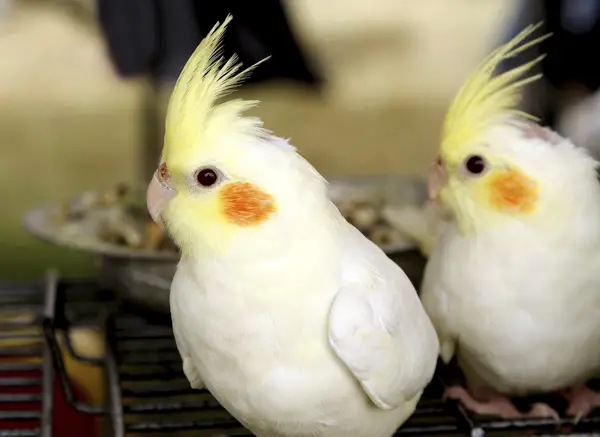
- The female will groom both the male and themselves
- She can also whistle and chirp extensively
- She performs the mating dance by stooping and raising her rear end while making cooing sounds
- Females cockatiels will also droop their wings in readiness for mating
Another question that arises is what are the female cockatiel mating sounds? They make several mating sounds like;
- cooing softly,
- chirping excessively,
- producing deep and long whistles,
- Softly squawking when sleeping
- Repetitive twittering
- Piercing shrills
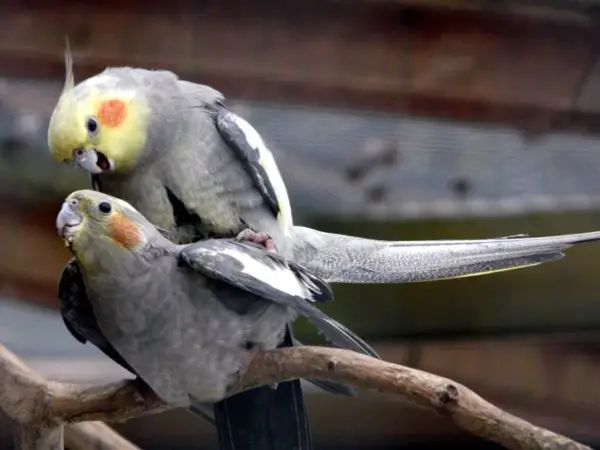
Female cockatiels also display nesting behavior. They will look for a dark area in the cage and prepare it for when it starts laying eggs. Remember, as long as a female cockatiel has matured sexually; it can lay eggs without a male. So, to avoid this, you should;
- Avoid petting it below the head so as not to sexually stimulate it
- Do not let it have access to dark areas when it is out of the cage
- Ensure it gets 12 hours of darkness. Over-exposure to light can trigger its hormones
Do Cockatiels Have A Mating Season?
In the wild, cockatiel mating season lasts from March to early October. That is because, during this period, the environment is ideal for breeding. The days are longer, and the temperatures are warm enough. There is also a lot of food. In captivity, you can create such an environment which means the cockatiels can breed at any time as long as the conditions are optimal.
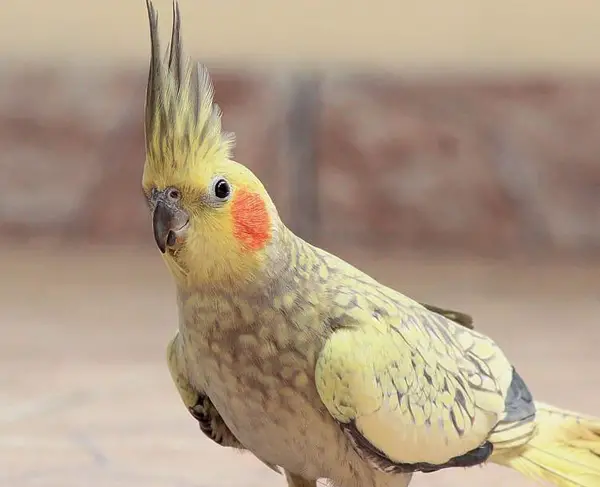
However, over-breeding can lead to the cockatiel straining more than it should. It takes a lot of strength and energy for females to lay eggs. If they are hormonal regularly, it could lead to chronic egg-laying, which results in physical stress and health issues.
How Do Cockatiels Flirt?
Yes, courting cockatiels engage in flirtation. The male cockatiel performs a courtship dance intended to attract the female cockatiel. He imitates the female cockatiel’s vocalizations as well. During a mating call, the male cockatiel will also follow the female.
The male cockatiel regurgitates into her mouth to demonstrate his ability to provide for the female. There may be two males and one female in the cage, but only one male is selected, or the males will not mate with the present female.
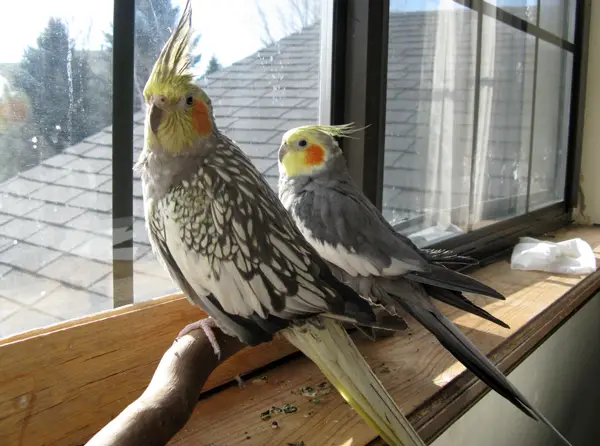
The two birds will bond, meaning they will spend more time together before mating. Before mating, there must be a genuine connection between the two birds. Cockatiels form lifelong, intricate relationships with their mates.
This bond is formed through bonding and courtship behaviors such as regurgitation, sharing food, singing together, and mimicking one another. Observing cockatiels engage in flirtation is indicative of their future compatibility. Additionally, it may indicate that they will begin courtship once mating season arrives.
Will Cockatiels Mate Without a Box?
Yes, cockatiels will mate without a box. In the wild, cockatiels create cavities in trees, so even in captivity, they do not need a box to mate. If there is no box in the cage, the female will prepare a space where she will put various materials. She will line the area with feathers, shredded paper, or the cage’s bedding.
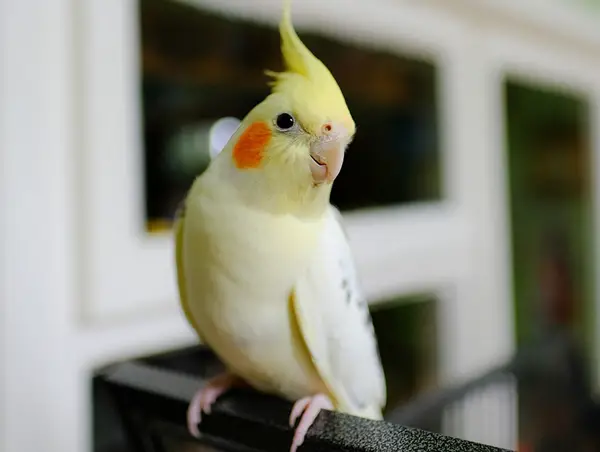
The most common areas are the corners of the cage, large toys, food bowls, or perches. Some cockatiels might even ignore the nesting box and create their own nesting space. Others prefer a nesting box and might even start getting hormonal due to the presence of the box.
How To Discourage Cockatiel Mating Behavior?
If you do not want to deal with chicks or even male and female cockatiel hormonal behavior, here is how you can discourage cockatiel mating behavior.
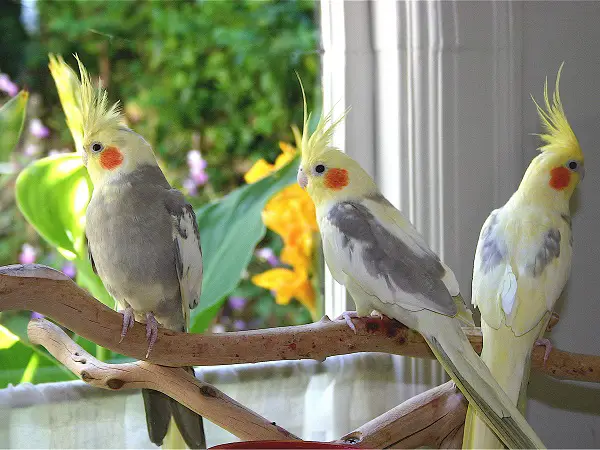
1. Minimize light exposure
Cockatiels breed during spring and autumn because that is when days are longer than nights. In captivity, you can regulate this by ensuring the cockatiels get 12 hours of light and darkness. At night, turn off the lights because even artificial lights can trigger mating hormones. You can also cover the cockatiel’s cage with a breathable blanket. That way, all light is kept out of the cage.
2. Adjust the cockatiel’s diet
Fatty foods can trigger hormones. Many cockatiel owners say that starch foods have often made the cockatiels behave unusually. These foods can communicate to the cockatiel that breeding has come.
So minimize fatty foods and substitute them with pellets, fruits, and vegetables. Ensure the vegetables are raw and not cooked. Cooked vegetables contain oil which makes them become fatty food.
3. Mental stimulation
When your cockatiel is bored, it gets more hormonal. So, add toys, puzzles, hanging gyms, and swing sets to the cage. They will keep the cockatiel entertained, diverting their attention from mating.
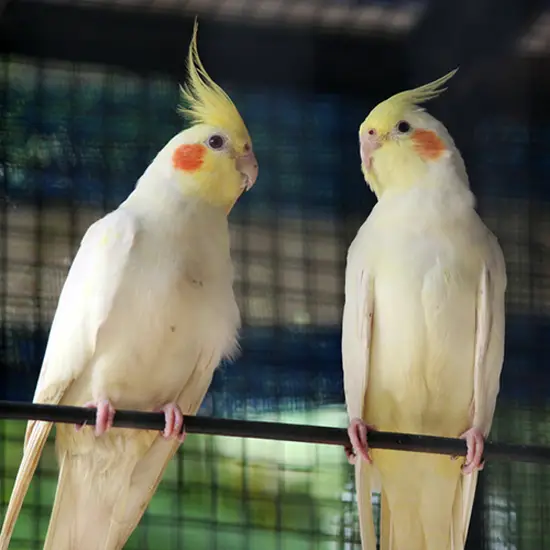
You can also use natural materials like non-toxic branches and leaves for your bird to chew. Also, spend time with your cockatiel. You can let it out of the cage and let it fly around and stretch its wings.
4. Do not add a nesting box
Nesting boxes can signal to the cockatiel that it is the breeding period. So, remove the box and not provide the bird with any material it can shred. As I mentioned, cockatiels do not need a nesting box; they can shred material and make their own nest. If you let your bird out of its cage, do not let it go to dark corners. The cockatiel may nest in one of them.
5. Petting
Stick to petting your cockatiel’s head only. Patting the bird’s neck, wings, and back can make it sexually aroused and see you as its mate. When mating, cockatiels groom each other in these areas.
A sexually frustrated bird can be very aggressive and bite you because you cannot give it the satisfaction it needs. Also, during the regular breeding season, do not provide the cockatiel with mirrors. The cockatiel thinks its reflection is a mate and might even regurgitate on the mirror.
How Many Times Will Cockatiels Mate?
Cockatiels will mate severally as long as they are both in breeding condition and healthy. Also, environmental conditions such as warm temperature and humidity can trigger the cockatiels to mate more frequently.
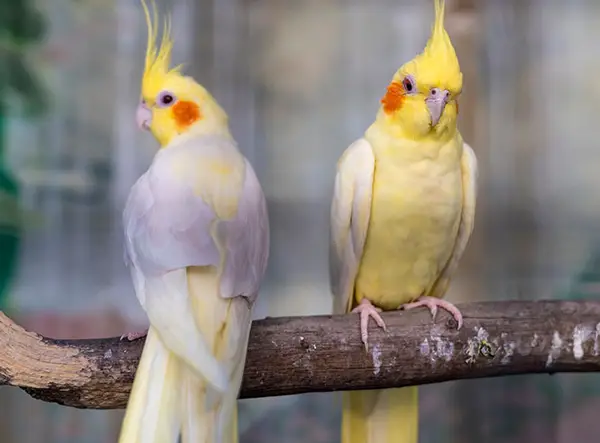
In the wild, spring and autumn months are most optimal for breeding. Why? Because food and water are abundant. If all these requirements are met in captivity, the cockatiels will mate all year.
Related: Why Is My Cockatiel Eating So Much?
Video Of Cockatiels Mating
Here is a video to give you a visual understanding of cockatiels mating
FAQs
Here are other related questions about cockatiel mating behavior.
Cockatiels stop breeding when they are ten years of age. After ten years, the cockatiel’s fertility declines; if it breeds, it could die because breeding is a very tedious process.
If cockatiels breed when too young, they experience mental and physical duress. Young female cockatiels can end up experiencing egg-binding, a life-threatening condition. A young cockatiel can also break their eggs, lay eggs that are not fully developed, and not brood their fertilized eggs.
Here are some ways you can stop cockatiel mating behavior.
- Separate a female and a male cockatiel
- Reduce the amount of light entering the cage
- Put the female cockatiel on hormone therapy
- Move the cage to another room
- Remove anything the cockatiel can use as nesting material
- Minimize the number of hours the cockatiels spend outside the cage
Conclusion
Cockatiels will show signs of mating when it is breeding season. If you are observant, you will notice that the male cockatiels will vocalize more while the female cockatiel droops its wings and rumps up its rear end. Cockatiels mate mainly during the spring and autumn months.
If you do not want your cockatiels to mate, ensure they get enough sleep in darkness, feed them non-fatty foods and remove any nesting material in the cage. I hope this article has answered all questions on cockatiel mating behavior.
